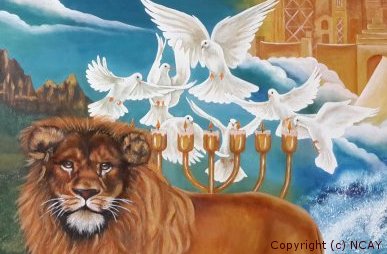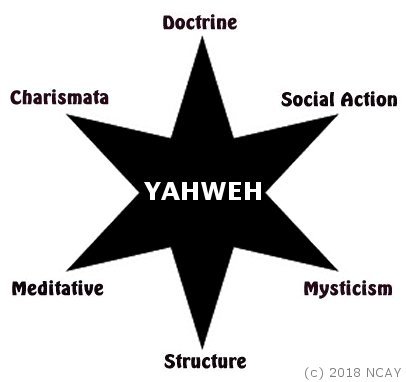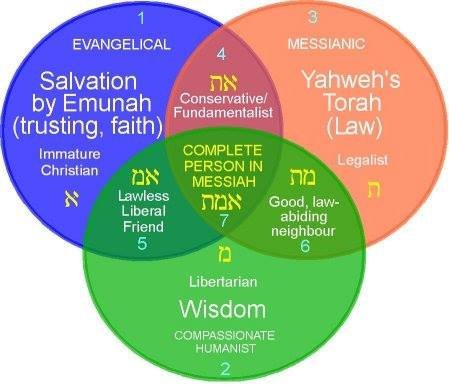
 FAQ 271
What is the Chief Identifying Mark
FAQ 271
What is the Chief Identifying Mark
of NCAY that Makes it Attractive?

NCW 63, August-October 1999 (First edition)
Second Edition, 13 October 2018

Q. What would you say was the chief identifying mark of the New Covenant Assemblies of Yahweh that would especially be attractive to new members?
This is really a very subjective kind of question because people are seeking for different things. Were I to identify what I believe to be the chief need in Christendom it would be the need for a WHOLE BIBLICAL DOCTRINE AND PRACTICE. Not everybody is, of course, seeking for this. However, I believe Yahweh established NCAY precisely for those believers who want the whole biblical emet (truth), however challenging, and not just the parts that seem to meet their particular circumstantial needs or answer fleshy cravings.
We are not, of course, the only ones claiming to offer the “whole package”, as it were. In fact, it is probably true to say that almost every Christian Church and Messianic Assembly believes that it is offering the whole deal. Whether this claim is borne out by the Bible itself is another question.
The Norwegian writers Sidsel Øiestad Grande and Jan Fredrik Myklebust in their High School textbook, LOGOS: Religion, Life Purpose & Ethics (“Logos: Religion - Livssyn - Etikk”, J.W.Cappellens Forlag A.S., Oslo, 1992), in trying to paint a systematic picture of the diverse factions of Christendom, basically divide them into subjective and objective categories. In the former they include the Quakers (who have virtually no structure at all and almost as little doctrine either), the Salvation Army (whose emphasis is on social help) and the Pentecostals (who stress the charismatic gifts). In the latter they have placed the Lutherans (who place an emphasis on doctrine - we could perhaps add the Baptists, Methodists, Messianics, and some others in this category too), the Catholics (for whom organisation and structure are vitally important, with the Pope as a sort of guarantee that doctrine is always current and correct), and the Eastern Orthodox Christians (who are highly ritualistic and into mysticism) (p.195).
In considering the Grande-Myklebust model I think it is true to say that NCAY contains important elements of all of these six traditions which may be respresented in diagrammatic form (see below):
 The 6 elements of a complete messianic community or fellowship
The 6 elements of a complete messianic community or fellowship
Doctrine and theology have always been important to Messianic Evangelicals. It was important to Yah'shua (Jedsus) and to the first apostles. Accordingly we, like Lutherans, Baptists, Messianics, and others, use much effort to ensure that our doctrine is comprehensive and as biblically accurate as we can make it. In this respect we have always looked up to the Baptists for their efforts to be true to the Davar (Word).
Charismata, beloved by Pentecostals but viewed with suspicion (with some justification) by most other wings of Christianity and accordingly given a wide berth, are also held in high regard by Messianic Evangelicals. We acknowledge all the New Testament spiritual gifts even if we do not necessarily agree with the interpretation given some of them by pentecostals and charismatics. Contemporary revelation and prophecy has always been a keynote of NCAY.
Meditative Christianity also also been a strong NCAY feature. Meditation and prayer are essential aspects of the Gospel - the “quiet Gospel”, so noticeably absent from many in the charismatic movement, yet a strong feature of the Quakers and Catholic monastic orders. Our longest revelation is on meditation (OB 331). Each member of NCAY is taught to seek the voice of Elohim (God) in all that he does, to devote much time to this, so that he may discern the “still small voice” as guidance for his life.
Structure and organisation also feature strongly in NCAY (see the Constitution). Like the Catholics and Mormons, we have a very well organised priesthood system though unlike the Catholics everybody plays a part, there being no Clergy-Laity divide. NCAY has both a pyramidal structure, on the one hand, and a horizonal structureless system on the other. We recognise that for good order, discipline and effeciency structure is absolulutely essential. However, we also recognise that such can crush the Ruach (Spirit) and accordingly this is balanced by an inner spiritual equality of all.
Mysticism, not to be confused with occultism, and which is such a strong feature of the Eastern Orthodox Church, figures strongly in the Chavurat Bekorot or 'Holy Order' of NCAY where the Priesthood is trained and where communal living is featured. NCAY has its own liturgical tradition rich in symbolism that runs alongside the extremely simple form of common worship.
Social Action, in the form of helping the outcasts of society, is another feature of NCAY. Since our earliest times we have worked with orphans in Africa and India, and with alcoholics and drug addicts in Norway, and more recently with the victims of occultism all over the world, but principally in Europe and the USA. Here we take our inspiration from the Salvation Army and many other ministries who labour to bless and ease the plight of the disadvantaged and oppressed.
 Venn Diagram showing the NCAY Vision of the Balanced and Complete Believer
Venn Diagram showing the NCAY Vision of the Balanced and Complete Believer
In answering your question, then, as to what will attract people to NCAY, I can only say that for some (those who have a call to this work) it will be the sum total of its aspects, and to others (who perhaps may only transition through it) it will be different parts, depending on their perceived needs, giftings and callings. Obviously not all of these aspects will come to the fore until NCAY is much larger (for example, social action, which requires a lot of manpower and material resources) but others most certainly will attract.
Thus those coming out of highly organised and structured religions (Mormon, Jehovah’s Witness, Catholic Church, etc.) will find repose in the structure and orderliness of NCAY.
Those coming from a Pentecostal/Charismatic background will find attraction in the openness, simple relationhips and revelatory character of the NCAY community, perhaps finding a depth they did not encounter in their previous spiritual homes.
Those with a mystical background will find easy passage into the Chavurat Bekorot, and those from a quiet background in Quakerism, Catholic holy orders, or a private belief system will find scope for enlarging their their deeper spiritual experience.
But most importantly, ALL of these people will have their horizons considerably broadened by the shere scope of the Messianic Evangelical vision and find themselves experiencing aspects of the Christian/Messianic emunah (faith) which perhaps their previous ecclesiastical allegiances denied them.
And that, I believe, is the great attraction of NCAY - it offers so much and is literally a gathering place for those of different temperaments and varied experiences as well as being an opportunity to really grow in Messiah through discipleship, service and evangelism.
We challenges ALL to change - NCAY is not a place of stagnation, but of continually “moving on” towards that spiritual fullness which is the goal of every Ruach/Spirit-born Bible-believing Christian/Messianic. Not all comprehend the scope of this work because they are in such a hurry to assess or judge it, but those who remain long enough to commit themselves to it are usually pleasantly and joyfully surprised!
Comments from Readers
[1] "The first thing in my mind is 'truth'" (SW, Germany, 13 October 2018)
[2] "The articles and sermons are well researched allowing one to arrive at the truth on whatever topic" (EB, Australia, 14 October 2018)


This page was created on 14 September 1999
Last updated on 14 October 2018
Copyright © 1987-2018 NCAY - All Rights Reserved




